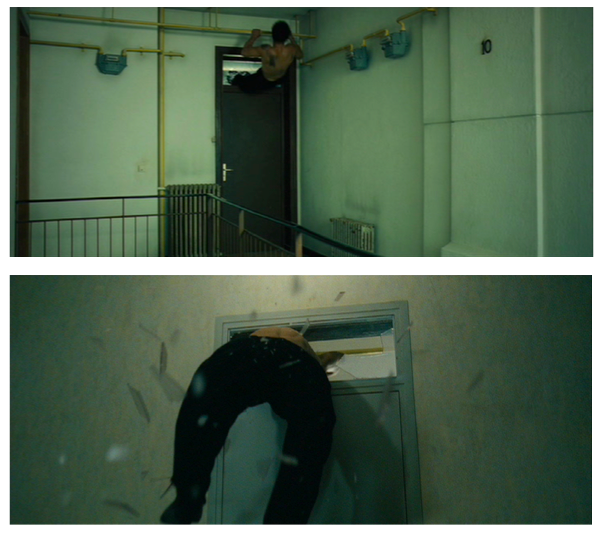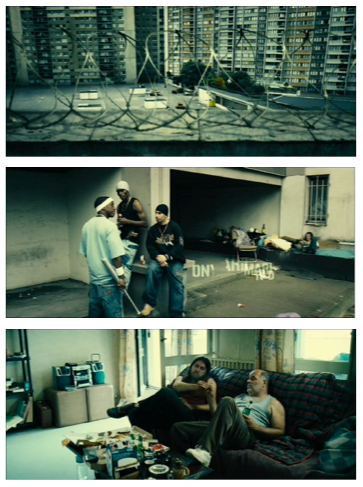The Aesthetic Turn: In Search of the Pictorial Intelligence
For all its benefits, the now widespread fashion of interpreting makers of moving images like Jean-Luc Godard as philosophers—as thinkers of and through the image—has yet to adequately confront a paradox which a media aesthetics can address. If film auteurs, showrunners, installation artists, and videographers produce thoughts in moving images, then why has the scholarly discourse favored verbal models of thinking to express how they philosophize in pictures?
Kyle Conway began this series by wishing to explore that part of “our experience of a media object [that] exists prior to and outside of language.” In my contribution, I would like to take up the question of language from another angle.
Film and media critics tend to privilege the conceptual work of the moving image-maker when the visual image can be grounded in a linguistic or verbalized idea—an idea, so the reasoning goes, which the media artist used representational forms to express. This inferential process (fig. 1) in effect relies on a extended commutation test, whereby one imagines the images of a film or TV show (1) as philosophical words on a page—a representation of a system of ideas, an argument or a ponderous statement (2)—in order to ascertain the distinguishing features of moving image-maker’s motivating intentions (3).

Fig. 1. The verbal model of moving image intelligence.
The maker of moving images is taken as a writer. The caméra really does materialize as a stylo. But is this all there is to the image-maker’s intelligence?
What if media critics were to acknowledge that some of the intellectualizing that filmmakers and showrunners and video artists do results in pictorial concepts? Can moving images not be intelligent—abstract, puzzling, profound, astute, quick-witted—without acting as surrogates for a discursive intervention?
This would require us to revise our thinking about moving image intelligence—to reimagine the relationship between pictures and ideas. We might acknowledge that some media artists speak in images alone, directly in representational forms. In short, some moving image-makers may not make intellectual or conceptual contributions to the viewing experience by committing themselves to preformed verbal systems of thought prior to producing an image and then using the image to communicate it to the viewer. It might rather involve theorizing a prior verbalized puzzle or deep conundrum by making images, using light and shade, color and tone, varieties of movement and stasis, compositional line and depth.
This involves making some concessions. Principle among these is that we might want to consider how we program ourselves for verbalized notation when we call media objects “texts.” In Tiepolo and the Pictorial Intelligence (1994), the art historians Svetlana Alpers and Michael Baxandall write of the Venetian painter: “…there is a sense in which painting like Tiepolo’s, in sharp contrast with what a text is able to do, lets us re-experience the process by which we first come to make sense of the world” (p.15). The authors skewer a dominant textual bias in Western aesthetics: “It has been a feature of European aesthetics…that painting does something roughly similar to what literature does.” Citing Lessing and others, they note that “the criteria of the comparison between painting and text have been textual ones” (p.2). The limits of the Lessing position are flaunted in Tiepolo, for he provides an example “of pictorial creativity from premises that are not literary” (p.3). “Instead of trying to tell,” they note, “Tiepolo shows” (p.40). One contribution to thought is the painter’s grand Treppenhaus ceiling, which makes a specifically pictorial “argument” about the “relation of the two-dimensional to the three-dimensional” (p.130) (fig. 2).

Fig. 2. Treppenhaus ceiling (Tiepolo, 1752-3).
We need not look to the fine arts for examples of the pictorial intelligence, of the penetrating image. It’s on display in the French blockbuster. The digitally composited two-minute long take that opens District 13 (Morel, 2004) might be read “textually” as a statement relaying the social problems that afflict the French banlieue (in 2004, or in 2010, when the film is set), the same problems the film’s protagonist, Lëito (David Belle), a master of parkour (fig. 3 and 4), wishes to combat.

Fig. 3 and 4. District 13 (Morel, 2004).
On some level, the roving camera of the opening shot analogizes the ghettoized space with the notion of an imploding prison system, where the exterior walls still manage to contain the inhabitants but the barriers within have crumbled, the legal and social order has collapsed into vagrancy, intoxication and gang violence (Fig. 5, 6 and 7).

Fig. 5, 6 and 7. District 13 (Morel, 2004).
From this standpoint, the film opens with a blunt statement, little more than a string of clichés.
But the image, by Pierre Morel, warns that this is merely a verbalized projection. There is pictorial intelligence here working on its own terms. Morel, trained as a cinematographer, doesn’t offer a list-like collage of cut-together, typical views. Conceived as a fluid movement along an axial trajectory, the shot mounts a pictorial argument, contrasting the sluggish, feckless, repetitive forms of ambulation, posture and rest with graceful and nimble mobility that remains possible even through the various frames and apertures—abandoned cars, bullet-riddled windows—of this decaying space (fig. 8 and 9). Through the moving image, parkour, itself a non-verbal, bodily form, is expanded as a directly pictorial concept of creative and improvisatorial motion.

Fig. 8 and 9. District 13 (Morel, 2004).
An image like this accommodates projections of verbal paraphrase even as its specifically visual concept recommends that we taken some distance from them.


